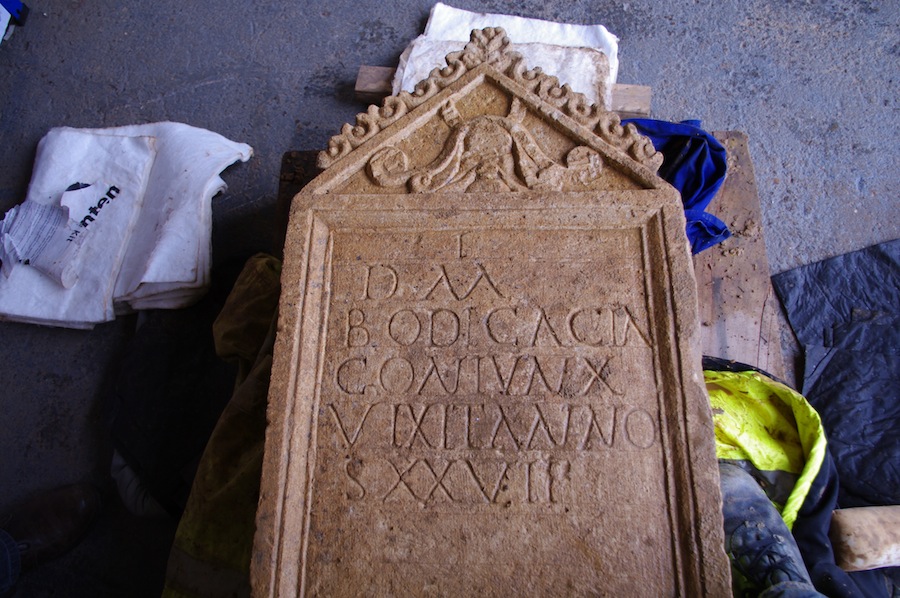Rare Roman Tombstone Discovered in England

A 1,800-year-old tombstone was discovered at a Roman cemetery in England this week. Because of its inscription, archaeologists know who was buried in the grave: a 27-year-old woman named Bodica.
"It's incredibly rare," Neil Holbrook, of Cotswold Archaeology, told Live Science.
For the last two months, Holbrook's team has been excavating a Roman cemetery just outside the ancient city walls of Cirencester, a town in Gloucestershire, to make way for the construction of a new office park. They documented about 55 graves — some of which contained wooden coffins and copper bracelets — but only one was covered up with a toppled-over stone slab. [See Images of Another Ancient Roman Cemetery in England]
The excavators waited until yesterday (Feb. 25) to lift up the stone, discovering it was indeed a tombstone.
The grave marker is among just nine other Roman tombstones found in Cirencester and about 300 found in the rest of Britain.
The grave dates to the second century, at a time when Cirencester was the second-largest city in Britain after London. The stone has very finely carved decorative details, Holbrook said, suggesting that Bodica had money or was married to someone with money. Inside the pediment, there's a sculpture of the Roman god Oceanus, perhaps to mark the "watery journey" between life and death, Holbrook said.
The Latin text reads "D.M. BODICACIA CONIUNX VIXIT ANNO S XXVII," or, roughly, "To the spirits of the dead, Bodica, loyal wife, lived 27 years."
Sign up for the Live Science daily newsletter now
Get the world’s most fascinating discoveries delivered straight to your inbox.
But the inscription has some archaeologists scratching their heads.
"The lettering and the writing is very poorly done — perhaps by someone who was illiterate," Holbrook said.
Some letters seem to be missing, and the spelling of "Bodica" — a Celtic name that means "victory" — as "Bodicacia" is somewhat puzzling. It might be a misspelling. Maybe Bodica selected this skillfully made tombstone before her death, but when it came time to actually inscribe it, the stone fell into the hands of someone who wasn't entirely equipped to do so. Or perhaps part of the Latin word "acacia," meaning "ax," was intentionally tacked onto her name to deter vandals, Holbrook said.
"We've only had it out of the ground 24 hours, but already it's created a massive amount of interest and debate," Holbrook said.
The archaeologists, who are wrapping up their excavation this week, found a skeleton associated with the grave. Eventually, an analysis of the woman's bones should reveal more details about the woman's life.
Follow Megan Gannon on Twitter. Follow us @livescience, Facebook & Google+. Original article on Live Science.











